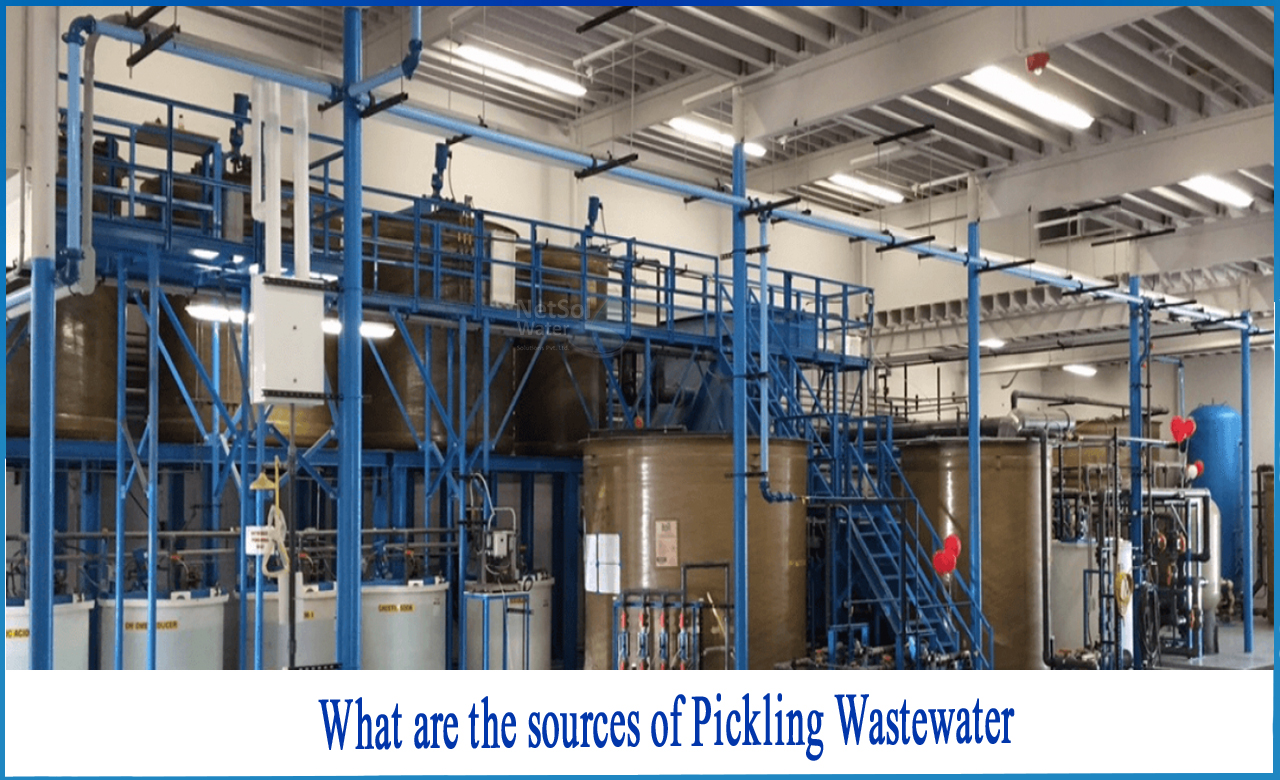What is Pickling wastewater?
The removal of corrosion products from metal parts is a stage in many manufacturing processes that utilize metal parts. Immersing the pieces in an aqueous solution of acid or molten alkali is a frequent procedure. Because of its low cost, sulfuric acid is frequently used. Sodium hydroxide is usually used as a caustic bath.
Pickling is the term for this procedure, which is usually followed by a rinse to eliminate any remaining acid or caustic acid. Aqueous solutions of nitric and hydrofluoric acids, molten salt baths, and other proprietary formulas are some of the other chemical descaling methods. The acid pickling process, in which sulfuric acid, nitric acid, hydrochloric acid, hydrofluoric acid, phosphoric acid, and other acids are used to remove oxides from metal surfaces, produces pickling effluent.
Composition of pickling wastewater
Pickling is essentially a cleaning method. To remove oxides from the metal's surface, acid solutions are utilized. Furthermore, additional substances on the metal's surface will be removed, in whole or in part, and will thus end up in the waste stream.Depending on the acid media employed, the pickling wastewater may contain a variety of components. After the pickling procedure, the pickling wastewater may contain acid residues ranging from 2% to 4%. Hydrochloric acid, surfactant, corrosion inhibitor, metal oxides scraped, and various water (salt) scales accumulated on the boiler heating surface, among other things, are all present in the pickling wastewater.
Methods of Pickling
The following are the six main pickling methods, which may include many processes:
i) Pickling with sulfuric or hydrochloric acid;
ii) Pickling with phosphoric acid;
iii) Footner pickling;
iv) Pickling with sulfuric acid and sodium di-chromate;
v) De-rusting with alkaline;
vi) Electrochemical treatment;
Characteristics of pickling wastewater
Pickling wastewater has the following characteristics:
1: a pH of less than 1.5,
2: is strongly acidic, includes a high concentration of phosphate, zinc ions, and other compounds,
3: diverse production methods, may have additional complicated components, and treatment is challenging.
What are the sources of pickling wastewater?
Pickling plants are commonly used to remove pollutants, impurities, stains, rust, and other contaminants from material such as copper, aluminium, precious and noble metals, and so on.
In the metallurgical and mineral industries, pickling plants are important. Pickling is one of the most efficient Cold Rolled Coil processing methods.Steel mills and electroplating plants are the primary sources of this type of wastewater. When the cost of eliminating rust and mill scale from structural forms, beams, and plates in workshops is justified, pickling is regarded a suitable approach.In electroplating, enameling, rolling, and other operations, pickling is a common pre- or intermediate treatment.
Conclusion
Nowadays, wastewater treatment plants are one of the most significant facilities in residential buildings, commercial office buildings, hotels, hospitals, resorts, and many other commercial and industrial sectors.
Taking these considerations into account, Netsol Water can customize Wastewater Treatment Plants as per the client’s needfor producing water that is safe to re-use or discharge after treatment. We provide design and consulting services for hotels, hospitals, resorts, and other commercial and industrial sectors in order to estimate WWTP sizing and capacity.
You can always find useful information by liking and following us on YouTube and LinkedIn.
For further inquiries or product-purchase-related questions, give us a call at +91-9650608473 or email at enquiry@netsolwater.com



